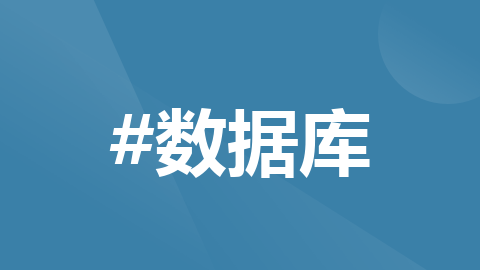ComponentScan
如果你理解了ComponentScan,你就理解了Spring是一个依赖注入(dependency injection)框架。所有的内容都是关于bean的定义及其依赖关系。定义Spring Beans的第一步是使用正确的注解@Component或@Service或@Repository或者@Controller但是,Spring不知道你定义了某个bean除非它知道从哪里可以找到这个beanComp
一、@ComponentScan注解是什么
如果你理解了ComponentScan,你就理解了Spring是一个依赖注入(dependency injection)框架。所有的内容都是关于bean的定义及其依赖关系。
定义Spring Beans的第一步是使用正确的注解@Component或@Service或@Repository或者@Controller
但是,Spring不知道你定义了某个bean除非它知道从哪里可以找到这个bean
ComponentScan做的事情就是告诉Spring从哪里找到bean
由你来定义哪些包需要被扫描。一旦你指定了,Spring将会在被指定的包及其下级包中寻找bean
下面分别介绍在Spring Boot项目和非Spring Boot项目(如简单的JSP/Servlet或者Spring MVC应用)中如何定义@Component Scan
二、@ComponentScan注解的基本使用
1.Spring Boot项目
总结:
- 如果你的其他包都在使用了@SpringBootApplication注解的main
app所在的包及其下级包中,则你什么都不用做,SpringBoot会自动帮你把其他包都扫描了 - 如果你有一些bean所在的包,不在main
app的包及其下级包中,那么你需要手动加上@ComponentScan注解并指定那个bean所在的包
举个例子,看下面定义的类
package com.demo.springboot;
@SpringBootApplication
public class SpringbootApplication {
public static void main(String[] args) {
ApplicationContext applicationContext =
SpringApplication.run(SpringbootApplication .class, args);
for (String name : applicationContext.getBeanDefinitionNames()) {
System.out.println(name);
}
}
}
类 SpringbootApplication 在com.demo.springboot包下,这个类使用了@SpringBootApplication注解,该注解定义了Spring将自动扫描包com.demo.springboot及其子包下的bean
如果你项目中所有的类都定义在com.demo.springboot包及其子包下,那你不需要做任何事
但假如你一个类定义在包com.demo.somethingelse下,则你需要将这个新包也纳入扫描的范围,有两个方案可以达到这个目的。
方案1
定义@CoponentScan(“com.demo”)
这么做扫描的范围扩大到整个父包com.demo
@ComponentScan(“com.demo”)
@SpringBootApplication
public class SpringbootApplication {
方案2
定义分别扫描两个包
@ComponentScan({“com.demo.springboot”,”com.demo.somethingelse”})
@ComponentScan({"com.demo.springboot","com.demo.somethingelse"})
@SpringBootApplication
public class SpringbootApplication {
特别注意一下:如果使用了方案2,如果仅仅只写@ComponentScan({"com.demo.somethingelse"})将导致com.demo.springboot包下的类无法被扫描到(框架原始的默认扫描效果无效了)
2.非Spring Boot项目
在非Spring Boot项目中,我们必须显式地使用@ComponentScan注解定义被扫描的包,可以通过XML文件在应用上下文中定义或在Java代码中对应用上下文定义
Java代码方式
@ComponentScan({"com.demo.package1","com.demo.package2"})
@Configuration
public class SpringConfiguration {
XML文件方式
<context:component-scan base-package="com.demo.package1, com.demo.package2"/>
三、@ComponentScan注解说明
@ComponentScan:会自动扫描包路径下面的所有被@Controller、@Service、@Repository、@Component 注解标识的类,然后装配到Spring容器中。
@ComponentScan的属性: value指定扫描的包,includeFilters包含那些过滤,excludeFilters不包含那些过滤,useDefaultFilters默认的过滤规则是开启的,如果我们要自定义的话是要关闭的。其中@Filters是一个过滤器的接口。
@Filters 指过滤规则,FilterType指定过滤的规则
FilterType.ANNOTATION:按照注解
FilterType.ASSIGNABLE_TYPE:按照给定的类型;
FilterType.ASPECTJ:使用ASPECTJ表达式
FilterType.REGEX:使用正则指定
FilterType.CUSTOM:使用自定义规则)
classes指定过滤的类
1.基本示例:
创建controller:
@Controller
public class UserController {
}
创建service:
@Service
public class UserService {
}
创建dao:
@Repository
public class UserDao {
}
添加启动类:
@Configuration
@ComponentScan(value = "com.spring.annotation")
public class ScanConfig {
}
测试:
@Test
public void test02() {
AnnotationConfigApplicationContext context = new AnnotationConfigApplicationContext(ScanConfig.class);
String[] beanDefinitionNames = context.getBeanDefinitionNames();
for (String name : beanDefinitionNames) {
System.out.println(name);
}
}
结果:
org.springframework.context.annotation.internalConfigurationAnnotationProcessor
org.springframework.context.annotation.internalAutowiredAnnotationProcessor
org.springframework.context.annotation.internalCommonAnnotationProcessor
org.springframework.context.event.internalEventListenerProcessor
org.springframework.context.event.internalEventListenerFactory
scanConfig
annotationConfig
userController
userDao
userService
可以看到对应的实体类已经注入到容器中
2.过滤指定的注解进行注入
- excludeFilters (排除过滤器)
@Configuration
@ComponentScan(value = "com.spring.annotation",excludeFilters = {
@ComponentScan.Filter(type=FilterType.ANNOTATION,classes={Controller.class})
})
public class ScanConfig{
}
@ComponentScan.Filter 指定了过滤器的规则,FilterType.ANNOTATION 表示按注解过滤,classes指定需要过滤的注解,Controller注解被排除,classes为数组可以指定多个,重新运行结果:
scanConfig
annotationConfig
userDao
userService
可以看到 原来的 userController 已经消失,说明没有被注入到容器中去
- includeFilters (包含过滤器)
@Configuration
@ComponentScan(value="com.spring.annotation",
// excludeFilters = {@ComponentScan.Filter(type = FilterType.ANNOTATION,classes = {Controller.class})}
includeFilters = {
@ComponentScan.Filter(type = FilterType.ANNOTATION,classes = {Controller.class}
)},useDefaultFilters = false
)
public class ScanConfig {
}
运行结果:
scanConfig
userController
可以看到只有 被@controller注解的bean注入到容器中去。useDefaultFilters默认的过滤规则是开启的,如果我们要自定义的话是要关闭的;
更多推荐
 已为社区贡献1条内容
已为社区贡献1条内容









所有评论(0)